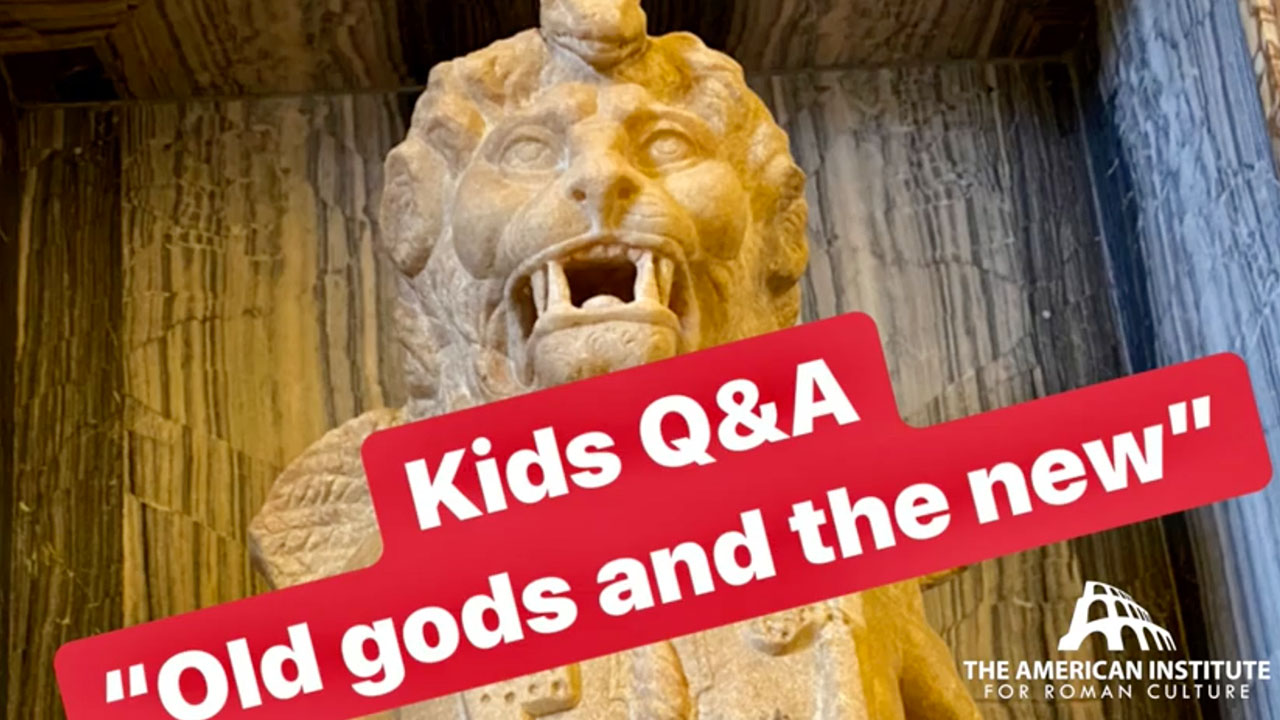Watch the online seminar hosted by Darius Arya here:
Ancient Roman religion was polytheistic and civic, meaning they worshiped many different gods, each with their specific field of power and function. Events in aspect of life in Ancient Rome (including politics, economics, health, and agriculture) were attributed to a god’s good grace or punishment, giving the religion a public and communal identity.
The religious structure of Ancient Rome was directly influenced by Ancient Greek religion and Hellenistic culture. It also shares many similarities with the Etruscan religion. Etruria was a great civilization that occupied the north of the Italic peninsula before and during the establishment of Ancient Rome. The Etruscans and Romans also shared commonalities in art and architecture.
In Ancient Rome, it was customary to make offerings and sacrifices to the gods in hopes of having their prayers answered. Emperors built temples dedicated to the gods to whom they were most devoted. The temples were sacred spaces and fundamental to religious practice. The Roman Forum, the political and administrative center of Rome, was crowded with temples due to their importance in Roman society. One of the best preserved temples is certainly the Pantheon located in the Campus Martius area. Its name indicates “the temple of all the gods” and it promoted the process of deification of the emperors.
The relationship between the emperors and the gods was profound. There are many symbolic visual representations of gods and emperors together, as can be seen in the Ara Pacis. The representation of direct interaction reinforced the idea that the emperors were manifestations of divine power. Some rulers were deified due to their great achievements during their lifetimes.
Often the connections between the Greek gods and heroes and their respective Roman versions are easily identified: Zeus and Jupiter, Aphrodite and Venus, Ares and Mars, Hercules and Heracles. The Roman pantheon (not in reference to the temple, but rather as the word used to refer to a particular group of gods that constitutes a religion or mythology) is composed of many “foreign” gods, appropriated from the cultures of the various regions conquered by the Empire.
For example, there is evidence of the Roman cult of the goddess Magna Mater, which originates from the area of modern-day Turkey. The Egyptian goddess Isis was also venerated by ancient Romans, and there was a temple dedicated to her in the area where the Basilica of Santa Maria Sopra Minerva stands today. The cult of the Persian god Mithras was also popular for a period of time. Underneath the Basilica of San Clemente, there is a Mithraic temple dated 1st century CE.
Bibliography
- Merrill, Elmer Truesdell. “The Attitude of Ancient Rome toward Religion and Religious Cults.” The Classical Journal 15, no. 4 (1920): 196–215. http://www.jstor.org/stable/3288303
- Burton, Henry Fairfield. “The Worship of the Roman Emperors.” The Biblical World 40, no. 2 (1912): 80–91. – http://www.jstor.org/stable/3141986
- Tavenner, Eugene. “Notes on the Development of Early Roman Religion.” The Classical Weekly 11, no. 13 (1918): 97–102. – https://doi.org/10.2307/4387581
- Moore, Clifford Herschel. “Individualism and Religion in the Early Roman Empire.” The Harvard Theological Review 2, no. 2 (1909): 221–34. – http://www.jstor.org/stable/1507024
- Rüpke, Jörg. “On Roman Religion: Lived Religion and the Individual in Ancient Rome”. Cornell University Press, 2016 – https://www.jstor.org/stable/10.7591/j.ctt1d2dn8b
This content is brought to you by The American Institute for Roman Culture, a 501(C)3 US Non-Profit Organization.
Please support our mission to aid learning and understanding of ancient Rome through free-to-access content by donating today.
Cite This Page
Cite this page as: Darius Arya, The American Institute for Roman Culture, “Seminar (For Kids) – From the Old Gods to the New” Ancient Rome Live. Last modified 04/09/2020. https://ancientromelive.org/seminar-for-kids-from-the-old-gods-to-the-new/
License
Created by The American Institute of Roman Culture, published on 04/09/2020 under the following license: Creative Commons: Attribution-NonCommercial-ShareAlike. This license lets others remix, tweak, and build upon this content non-commercially, as long as they credit the author and license their new creations under the identical terms. Please note that content linked from this page may have different licensing terms.



